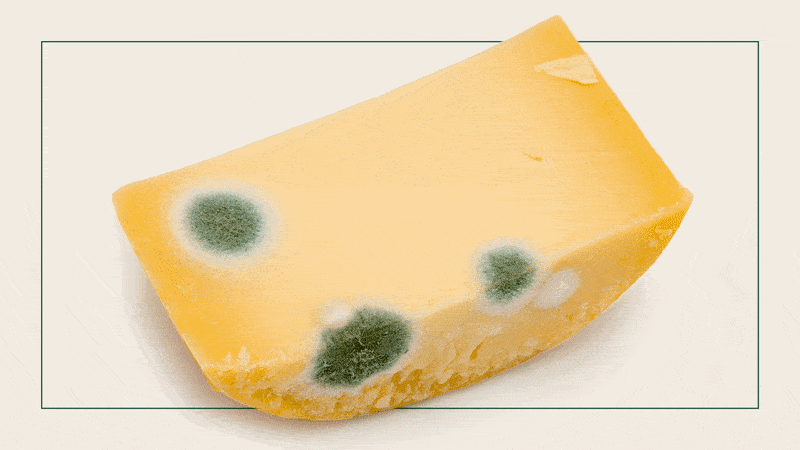When we buy groceries, we like to imagine that everything will be eaten promptly, while it’s perfectly fresh. But in the real world, plans change, food sits around, and sometimes, mold grows on it. What do we do then?
Can I Just Cut Mold Off Food? Ask Paul
Published June 7, 2023.

In most cases, the answer is: Toss it.
What Is Mold, Anyway?
Mold is the general name for thousands of different species of fungus, which form fuzzy, colorful colonies on the surface of foods (as well as other moist places like basement walls). They propagate through spores: microscopic cells that fill the air and teem on surfaces in our homes. Unlike most microbes, some mold species can grow readily at refrigerator temperatures as well as at room temp, and they don’t mind the salty or sugary environments that commonly keep bacteria at bay.
Why Does Food Get Moldy?
Mold spores get onto the surface of food whenever it’s exposed to air, touched with your hands or with a kitchen utensil, or left in proximity to other moldy food (the “one bad apple” principle) or at many other opportunities while it’s in transit. The more often it’s exposed, though, the more likely it is that spores will take hold and start to grow.
How Long Does It Take For Mold to Grow on Food?
Depending on the species, it can take anywhere from a day to a few weeks after exposure before the first mold is visible.
Sign up for the Cook's Insider newsletter
The latest recipes, tips, and tricks, plus behind-the-scenes stories from the Cook's Illustrated team.
What Happens If I Eat Mold?
There are, however, some molds that produce mycotoxins, and these are harmful and potentially carcinogenic. To be on the safe side, do your best to avoid eating mold, except for the aforementioned welcome molds.
Foolproof Preserving
We set out to create 110 recipes from a wide range of categories that will let you preserve with confidence whether you’re a first-time or experienced canner.Can I Just Cut the Mold Off Food?
It depends on the food. Usually, no. If the food is porous (like bread) or moist (like jam), the surface mold you see has very likely permeated below the surface as well. Toss it out. There are a few exceptions, cases in which it’s fine to remove the mold and eat the food.
When Is It Okay to Eat Moldy Food?
- If a hard or semi-hard cheese, like cheddar or Swiss, has mold on the surface, you can trim off the mold and save the rest of the cheese. The USDA advises to trim to a 1-inch depth below the surface, and be sure not to cut through the moldy part with your knife, because then the knife will carry the spores from the surface into the cut cheese.
- Hard, dense produce, like carrots and winter squash, can be treated similarly. Cut 1 inch below the mold.
- The white rind on cheeses like Brie is made of a harmless, flavorless mold that’s part of the cheesemaking process. You can eat or remove that rind. Likewise, the blue in blue cheese is both edible and delicious.
- The outside surfaces of whole dry-cured ham and salami are typically coated in a white, powdery mold. It’s supposed to be like that! Scrub off the mold and eat the meat.
Any other food—soft cheese, soft fruit, yogurt, that partially-used can of tomato paste, any leftovers—should be discarded. Handle them gently, so as to avoid spreading the spores throughout the air, and sanitize the area where it was kept with a solution of 1 tablespoon of bleach in a quart of water.

